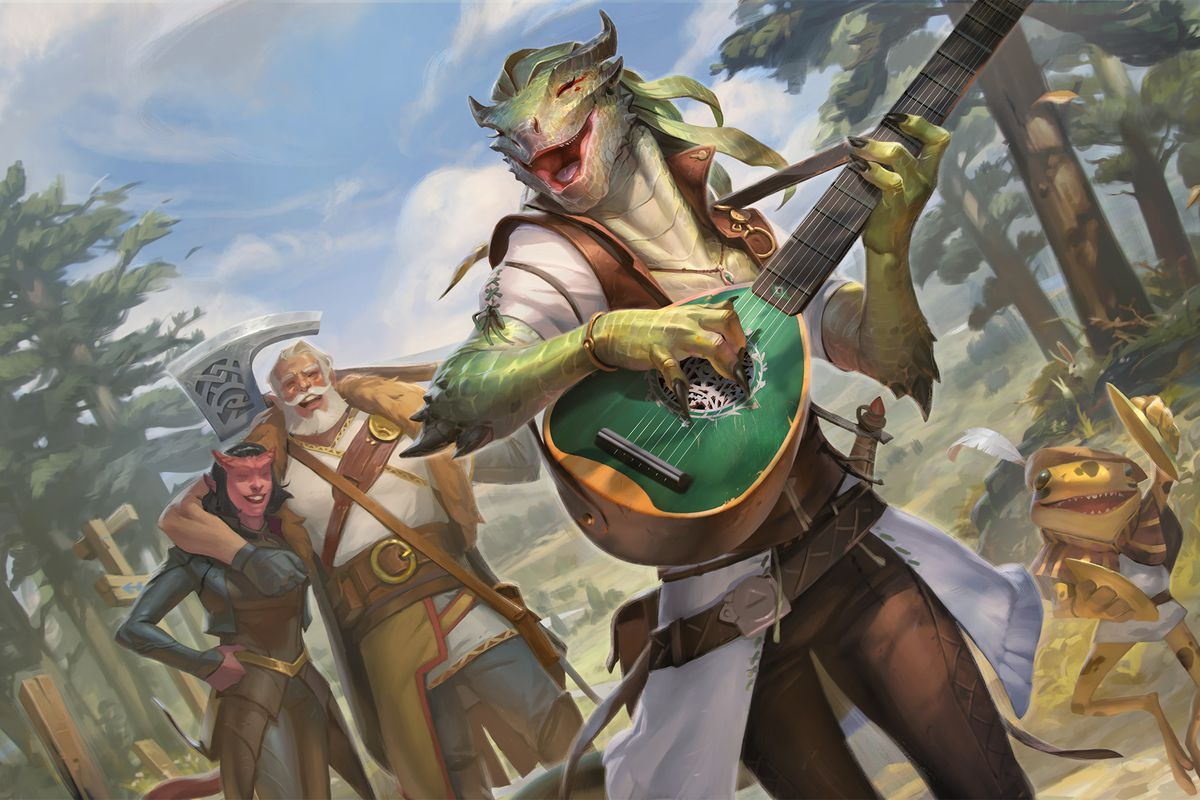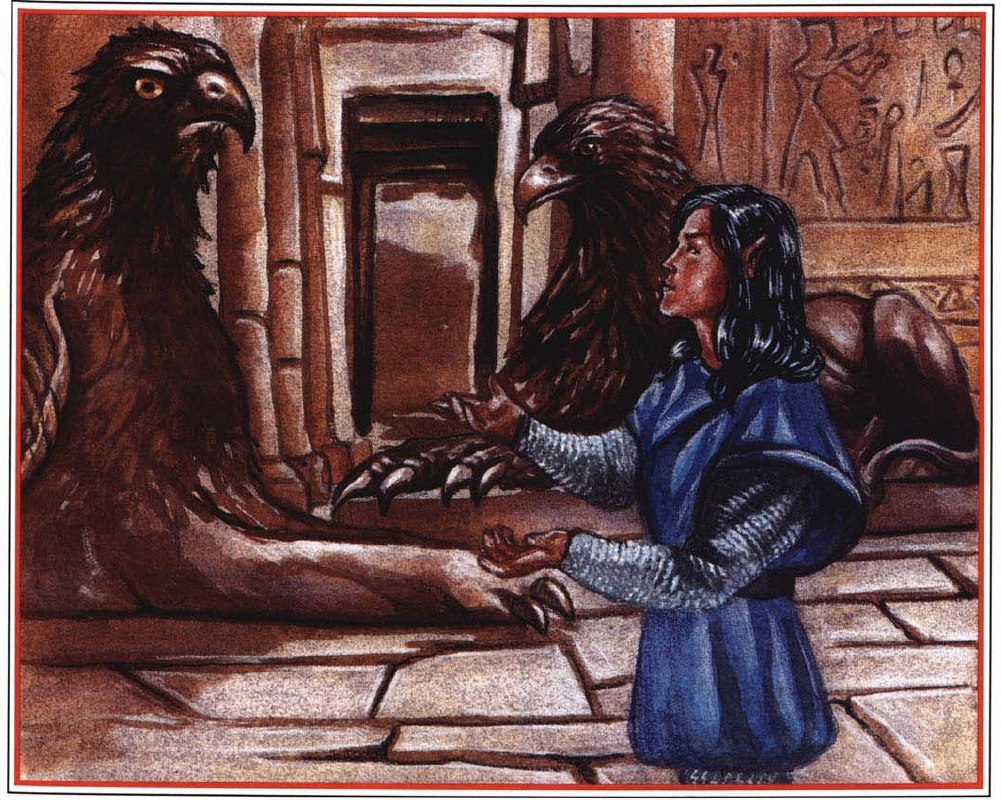Appraising ADVANCED D&D - Part II (Races)
Mmmm, races from the good old days, Before tieflings, drow and dragonborn became core options in the World of Warcraft menagerie that is modern D&D.
 |
| This is the D&D liberals want. |
There are no half-orcs in second edition. I don't miss them and honesty feel half-elves could just as well have been left out.
Although it is the ability score adjustments that perhaps initially draws the eye on that first page of the PHB chapter, that is really only a small part of the page and everything else is actually the interesting stuff:
Minimum and maximum ability scores. Class Restrictions. Level Limits.
How can we know that Dwarves are a durable and stocky lot? Because no dwarf will ever have less than STR 8 and CON 12. We can know elves are clever and prepossessing folk, because no elf has less than 8 in INT and CHA. It goes the other way too - Dwarves have a cap of 17 for DEX and CHA (which means with the -1 CHA adjustment, no dwarves with more than CHA 16) and can never become wizards.
The requirements aren't hard to meet and they serve a purpose that I find meaningful and worth mentioning, since the present edition of D&D has explicitly gone the opposite direction: They limit your character, both mechanically and narratively.
 |
| In order to ensure my readers are antagonised to the fullest, the rest of the art in this article will all be from the revised Player's Handbook. |
I will digress a little and talk about the direction that later editions of the game has gone in. 3rd edition removed all racial class restrictions and level limits and late stage 5e took it a step further and basically put it in the hands of the player to make the game aspects of choosing a race be whatever the player decides it to be. Quote Tasha's Cauldron of Everything:
"... a typical character race in D&D includes little or no choice-a lack that can make it difficult to realize certain character concepts. The following subsections address that lack by adding choice to your character's race, allowing you to customize your ability scores, languages, and certain proficiencies to fit the origin you have in mind for your character."
In other words, late stage 5e, as written, hands full control to the player to design whatever character he wants. So yes, you can play a a feeble shadow-touched dwarf wizard bladesinger with CON 8 and CHA 19 (just from using Tasha's) because modern D&D is basically about being able to realise any kind of character concept.
I am not going to dwell on how Tasha's removes all these constraints and leaves it wholly to the player to customise as he sees fit, because I can't even. So instead, I will focus on my main point, which is that something I find valuable gets lost in this:
That the constraints of character creation also bring definition to the character. They are what makes the world come alive.
Put simply: In a world where everything is possible, nothing meaningful actually happens.
 |
| The RPG culture wars have come to the Mythlands! |
We use the rules to limit and define what characters can and can not do. It would be boring, after all, to play a game where you can simply declare "I successfully kill the orcs" in every encounter with no dice ever being rolled. And it would become simply meaningless to play in a world where a player could declare "I transform my 1st level character into a god, imprison the dark lord with a mere thought and implement world peace and harmony overnight." Limitation brings meaning to the roleplaying experience.
I have stretched the analogy here (as we like to say in Denmark: exaggeration furthers comprehension), but it is the same principle at work when we employ and embrace limitations in the character creation process, such as racial requirements and class limitations: They create definitions and contours for the world of fantasy we enter into and in this way, make it come alive.
It's not that I am all that vested in the constraints particular to the core AD&D rules (although I think they make an excellent baseline). But I am vested in the exploration of something otherworldly (such as playing and elf or halfling) also coming with some form of constraint that demarcate what an Elf is like and how that is tangibly different from playing a human.
This is taken even further in Classic D&D of course, where all elves are fighters and magic-users. Which is exactly how Poul Anderson describes them in Three Hearts & Three Lions:
“[The elves] magicked up some of their food and drink ...and hunted some among the weird beasts which prowled their domain. All of them seemed to be warriors and sorcerers”
Elves in this tale are different from humans in ways that go beyond culture, appearance or physique.
And here, as in Classic D&D, that translates into a species that are all of them warriors and sorcerers. It's a stark limitation on what elves are like in one sense (though also an incredible enhancement compared to humans who can only be one or the other, and are for the most part neither), but it is also something so very interesting, that elves are so inherently different. When you embrace those limitations and lean into it, it helps to create the wonderment of the fantasy world explored through RPG.
 |
| You thought we were done posing like morons? FOOL. We're never done. |
Then there is the topic of racial class restrictions. Mostly, I'd rather discuss that in the next entry as they say more about the classes than the races. With a few exceptions:
All the short races (Dwarves, gnomes, halflings) have a strong immunity to magic and consequently never become wizards (except gnomes who have a strong affinity with illusion magic). This is, to me, a very strong world-building element, as this is a fairly large component of the realms of civilization for whom wizardly magic is simply not a factor, except as something Other, out there, an intrusion upon their world. There is all kinds of implications one could draw from such a fact.
 |
| Is he phasing through the floor? Pleading a case to a stone griffon? I HAVE NO IDEA WHAT'S GOING ON HERE. |
Alright, enough meta-commentary. Let's talk demi-human level limits, beyond their role of granting definition through limitation.
At a glance, they can seem frustrating. But. I think the main issue to watch out for with level limits is whether or not they are balanced against the overall level cap of the campaign. For example, I think the level limits in B/X are OK. Could be rejigged a little perhaps, but OK for a campaign that goes no higher than level 14.
In BECMI, where levels go to 36, they suck donkey balls and should have been changed in the Companion volume somehow (hey, you weren't scared of gimping the thief abilities because of it).
In AD&D, I find the limits are well adjusted to a game that goes no higher than level 20.
Consider in this also multi classing. Your elven fighter/thief/mage needs 3.315.000 XP to reach its 12/12/15 level cap. Only wizards, Rangers and paladins aren't fully level 20 at that point. Thieves got to level 20 more than a million XP prior. Even your single class elven mage will reach the level 15 cap when thieves are level 18 and druids level 19.
 |
| Quite possibly the only instance of published D&D art featuring crying and screaming children. |
Assuming the campaign caps at level 20, all this works. If you go higher, presumably via the Dungeon Master Option: High Level Campaigns book, you'll want to follow its recommendation to apply the added XP cost from the DMG once you hit your level limit.
Given this, it is unfortunate that level limits are found in the DMG rather than PHB. Those choices should be frontloaded to the players with full transparency.
Anyway, I mentioned multi-classing and I want to talk about them here rather than the class article, because it plays into the whole concept of how demi-humans are fundamentally wired differently than humans and therefore also have different capacities. And I like multi-classing exactly because it gives you a different experience of the game itself when you play as a demi-human.
You achieve far more breadth than a human PC can hope to emulate, but also advance slower. You will be looking at your capacity more horizontally across class features than vertically, simply getting better in your chosen field. To me, it tallies nicely with assumptions about demi-humans and lifespan. Why, as an elf, should you narrow your vision, when you have centuries to master many crafts?
 |
| "Oh god, it's... KOBOLDS. I can't look!" (you're an elf. Why are you carrying a torch?) |
Because it's Advanced D&D, we also get a full page of tables to roll height, weight, age, maximum age range (file under - never actually been relevant to any table play ever) and ageing effects, as well as a discussion on how that interacts with magical ageing.
Lastly, let's dive a bit into the various races and see which interesting bits float to the surface:
- The suite of elf abilities is frigging stacked. Why do they even have an eye for secret doors?
- Among the languages a gnome can learn are the simple common speech of burrowing animals such as moles, badgers, weasels shrews, ground squirrels, etc.
- If you choose halfling, you have to roll percentile dice to see if you have infravision and how much (15% chance of 60 ft and 25% chance of 30ft if you failed at securing 60ft range), which also comes with the ability to detect slope and direction underground. The roll is actually to find out how much Stout blood your halfling has. I am not sure how I feel about this.
 |
| Watch... How effortlessly I rock this outfit and spell-casting pose. |
- Bonus to saves vs magic equal to 1 per 3.5 of CON. So CON 14 gives you a whopping +4 to saves vs magical effects. Whoa.
- trouble using magical items - 20% chance of failure to use any magical item not specifically suited to the character's class.
- Infravision
- +1 to hit goblins (Dwarves also apply that to orcs and hobgoblins and gnomes also to kobolds)
- -4 Penalty for various giant-sized creatures to hit them
- Proper underground perception abilities for detecting things such as grade/slope and depth underground. They have a few shared and a few different ones, which is nice.
Overall, it paints a picture of gnomes essentially being fae dwarves, especially in the light of gnomes affinity with illusion. I can go with that and begin to wonder whether the ur-species of the two was originally fae or became that later.
That's all for races. Next up, the GOOD stuff. Classes!






Thanks for these AD&D articles. I'm currently on a 2nd Edition nostalgia kick and it's great to get someone else's perspective on the game.
ReplyDelete2nd edition is my Old School. Good to know more voices on that.
ReplyDeleteI couldn't have said it better myself. The power of saying 'no' to the players is as strong as the power of saying 'yes'.
ReplyDelete"The requirements [...] limit your character, both mechanically and narratively."
ReplyDeleteFirst edition: Yes, especially female characters.
Cool and that i have a super offer: Where Do You Get The Money To Renovate A House home renovation near me
ReplyDelete